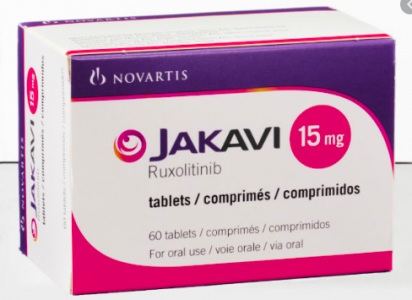Month: April 2020
-
FDA warning to sellers of Miracle Mineral Solution
The U.S. Food and Drug Administration has issued a warning letter to a seller that markets fraudulent and dangerous chlorine dioxide products known as “Miracle Mineral Solution” for prevention and treatment of “Novel Coronavirus Disease 2019” (COVID-19). The FDA has previously warned consumers not to purchase or drink chlorine dioxide products sold online as medical treatments, as the agency…
-

Novartis planning to initiate clinical study of Jakavi in severe COVID-19 patients and establish international compassionate use program
Jakavi (ruxolitinib) is an oral inhibitor of the JAK 1 and JAK 2 tyrosine kinases. Jakavi is approved in 101 countries for the different indications including treatment of adult patients with polycythemia vera (PV) who are resistant to or intolerant of hydroxyurea and for the treatment of disease-related splenomegaly or symptoms in adult patients with…
-
Anti parasite drug (Ivermectin) may help stop Coronavirus, Australian reasearchers says
Australian researchers have published a study showing Ivermectin (drug commonly used to treat parasite infections) can also kill coronavirus in a laboratory setting in under 48 hours. Ivermectin is FDA-approved for parasitic infections and is widely available, due to its inclusion on the WHO model list of essential medicines. Ivermectin has been widely used since…
-
Falsified HIV rapid diagnostic test circulating in Guyana and Kenya
WHO was informed that at least 8,240 falsified rapid diagnostic tests to detect HIV-1/2 have been distributed in Guyana at end-user level. The product is Uni-Gold™ HIV and claims to be manufactured by Trinity Biotech plc. Subsequent reports revealed that the same falsified product is also circulating in Kenya. Uni-Gold™ HIV is a single-use rapid diagnostic…
-
WHO update on falsified medical products, including in vitro diagnostics, that claim to prevent, detect, treat or cure COVID-19
The Coronavirus disease (COVID-19) pandemic (caused by the virus SARS-CoV-2) has increased demand for medicines, vaccines, diagnostics and reagents, all related to COVID-19, creating an opportunity for ill-intended persons to distribute falsified medical products. 1. FALSIFIED IN VITRO DIAGNOSTICS AND LABORATORY REAGENTS WHO has received multiple reports regarding falsified in vitro diagnostics (IVDs) and laboratory…
-
Safety advisory – alternative product filling shortage may cause airway irritation if administered via inhalation
Therapeutic Goods Administration (TGA, Australian department of health) advising consumers and health professionals that Gentamicin 40 mg/ml Injection (Hospira UK Limited) may cause constriction or irritation to the airways if used as an inhalation to treat certain infections in the lungs, due to the presence of the preservatives, sodium metabisulfite, methyl hydroxybenzoate and propyl hydroxybenzoate.…
-
45. Chi-square (χ2)
The Chi-square is a statistic, which is traditionally used in disproportionality analyses. In certain standard queries of the EudraVigilance Data Analysis System, the Chi-square is used as an alternative measure of association between the medicinal product P and the adverse event R based on the following calculation: χ2 =(AD−BC)2 (A+B+C+D)/[(A+B)(C+D)(A+C)(B+D)] χ2 ≥ 4 is indicator…
-
Paediatric labeling updates for doxycycline, clindamycin and caffeine citrate
Drug labels for doxycycline, clindamycin and caffeine citrate now include better information for healthcare providers on recommended usage and dosage in pediatric populations. The data that informed these label changes came from research funded by the Eunice Kennedy Shriver National Institute of Child Health and Human Development (NICHD), part of the National Institutes of Health. Doxycycline is…
-
44. Relative reporting ratio (RRR)
Relative reporting ratio (RRR) is the ratio of how many adverse drug reactions (ADRs) under exposure were actually observed over the number of expected events under the assumption that ADR and drug exposure were independent. RRR is estimated as: with p (drug i) denoting the probability of a target exposure being reported, p (ADR j)…